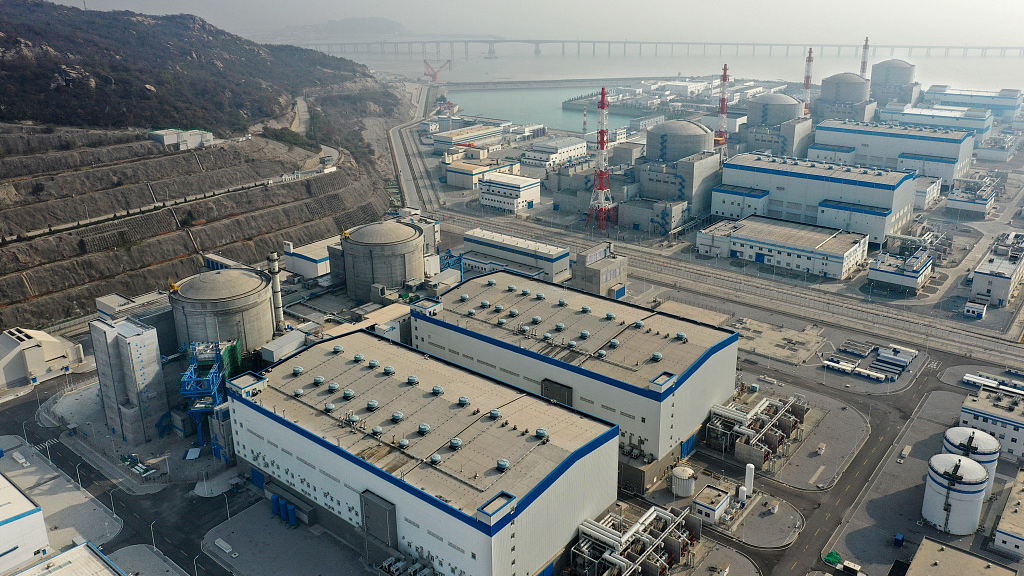China has commenced building its first nuclear-powered steam supply plant for industrial purposes, a significant step toward diversifying its nuclear power beyond electricity generating and residential heating, reported state-run media outlet, CGTN.
Ukraine’s ‘Heart Wrenching’ Campaign To Support Its Dwindling Army In War Against Russia Gets Massive Support
The report said that the project aims to utilize the heat produced by nuclear power to transform desalinated seawater into clean, stable, and efficient industrial steam. This would enable Beijing to cut down the energy consumption and carbon emissions.
The project is being built in Lianyungang City in eastern Jiangsu province. The project will cost 730 million yuan ($108.4 million) and take 24 months to complete.
The Tianwan nuclear-powered project, which provides industrial steam to Lianyungang City, will be completely operational by the end of 2023, according to China National Nuclear Corporation (CNNC).
It will also include constructing new desalination plants, power plants, and pumping stations. CNNC subsidiary Jiangsu Nuclear Power Company and the Lianyungang Petrochemical Industry Base are working together on the project.
Not Good Enough! US Could Sell Its ‘Lousy Warships’ To Allies That Were Designed To Fight China In SCS
Liu Yongsheng, the project manager, told China Media Group (CMG) that “upon completion, the project will supply 4.35 million tones of steam annually, reduce the annual burning of coal equivalent by 362,800 tones, carbon dioxide by nearly 0.97 million tones, sulfur dioxide by 166.88 tonnes and nitrogen oxide by 238.54 tonnes, which is equivalent to planting 2,900 hectares of trees.”
Currently, coal-fired power stations or coal-fired boilers provide most of China’s industrial steam. According to the CNNC, the project would look into a novel technique to meet the demand for industrial steam while reducing overall energy consumption and emissions.

The steam produced by the plant unit will be delivered to the Lianyungang petrochemical industrial base, which is one of seven petrochemical industrial bases planned along with China’s coastal areas.
In addition, the project would also establish an energy demonstration plan for China’s petrochemical industry’s upgrade and transformation.
“As one of the seven major petrochemical industry bases planned and constructed in the coastal areas of China, the petrochemical base is a national eco-industrial demonstration park designated by the Ministry of Ecology and Environment, the Ministry of Commerce, and the Ministry of Science and Technology, and strives to build a world-class large-scale petrochemical base,” CNNC noted.
Big Push For Clean Energy
Meanwhile, the use of nuclear power to produce industrial steam intends to meet steam demands in the petrochemical industry and is seen as a new option to reduce overall energy consumption while also improving environmental protection.
In the plant, steam will be drawn from the secondary circuits of the Tianwan plant. The heat will then be transferred by an insulated above-ground pipeline to the Lianyungang Petrochemical Industrial Base for industrial production and utilization after going through a multi-stage heat exchange.
US Threatens China With ‘Military Action’ If It Breaches The Red Line; Can US Navy Fight PLA On Its Home Turf?
The first four units at the plant, which commenced commercial operation between June 2007 and December 2018, are Gidropress VVER units delivered by Russia. The seventh and eighth units will also be delivered by Russia, for which a general contractor was signed in March 2020. Units 5 and 6 are both equipped with Chinese ACPR1000 reactors.
Tianwan will be the world’s largest nuclear power station when all eight units are operational, with a combined producing capacity of approximately 8100 MWe.
China’s Efforts To Diversify Nuclear Energy Usage
The 14th Five-Year Plan (2021-25) for a modern energy system was released by China’s National Development and Reform Commission (NDRC) earlier this year, outlining concrete goals for annual energy supply capacity as well as measures to increase the country’s energy independence.

This includes increasing nuclear power as the country goes greener. The plan is consistent with China’s long-standing resolve to reduce carbon emissions while ensuring energy supplies in the face of the persisting Covid-19 pandemic and growing global uncertainty.
Under the plan, the widespread use of nuclear energy in industries such as clean heating, industrial heating, and seawater desalination will also be encouraged.
By 2025, the country hopes to have 70 million kilowatts of installed nuclear power capacity. According to the report, the nation should actively encourage the building of coastal nuclear power projects, maintain a steady construction tempo, and roll out new coastal nuclear power projects sensibly based on assuring safety.
To meet the aim, efforts such as supporting demonstration projects of advanced reactor types such as high-temperature gas-cooled reactors, fast reactors, modular small reactors, and offshore floating reactors should be implemented, the report said.
- Contact the author at ashishmichel@gmail.com
- Follow EurAsian Times on Google News





